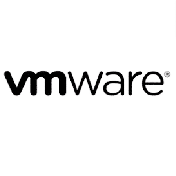Seminarinhalt
After you successfully complete this course, expect to be able to:
- Introduce you to the NonStop server architecture including Cluster I/O
- modules and their function and location
- Introduction of the software architecture for CLIMs (CIP Subsystem)
- Provide an overview of the IP Cluster I/O Module (CLIM)
- Provide an overview of the Storage CLIM
- Adding CLIMs to a NonStop system
- Provide an overview of the generic CLIM commands
- Provide an overview of the specific Storage CLIM commands
- Provide an overview of the specific IP CLIM Commands
- Provide an overview of how to diagnose an IP CLIM environment
Programm
- Course introduction
NonStop Hardware Architecture Overview
- Architecture Overview of HPE Integrity NonStop Servers and HPE
- Integrity NonStop BladeSystems using CLIMs
- Overview of HPE Integrity NS16x00 Systems using CLIMs
- Overview of HPE Integrity NS2x00 Systems using CLIMs
- Overview of HPE NonStop HPE Integrity NB5x000c BladeSystems using
- CLIMs
- Describe the basic functions of the CLIMs
CLIM Architecture
- CLIM Product Overview
- Introduce the Cluster I/O Module (CLIM)
- Describe the common components of the CLIM
- Describe the CLIM theory of operation
- Describe how the CLIM connects into the NonStop Server
- Describe the Cluster I/O Protocol (CIP) software components
Storage CLIM
- Introduce the Storage Cluster I/O Module (CLIM)
- Describe how the Storage CLIM connects into the NonStop Multicore Architecture (NSMA)
- Describe the hardware components of the DL385 G2 and G5 Storage CLIM
- Describe the hardware components of the DL380 G6 and DL380p Gen8 Storage CLIM
- Describe the SAS Disk Enclosures MSA70 and D2700 hardware components
- Describe the SAS Tape Drives
IP CLIM Architecture
- Introduce the IP Cluster I/O Module (CLIM)
- Describe how the IP CLIM connects into the NonStop System
- Describe the hardware components of the IP CLIM
Managing CLIMs
- Procedures for managing CLIMs
- OSM LLL CLIM prep
- SCF commands for adding CLIMS to the system
- SCF commands to show CIP subsystem and CLIM status
- Commands for adding other basic components as providers for IP CLIMs
- Enable a trusted relationship between NonStop and CLIM
Common CLIM Commands
- SCF commands for the CIP subsystem
- CLIM backup and restore commands
- CLIMCMD command wrapper and examples of CLIMCMD
- Single Sign On (SSO) for CLIMs
- Some CLIMCMD Linux Examples
Storage CLIM configuration
- Overview of the storage configuration using Storage CLIMs
- Specific SCF commands for the Storage CLIM
- Adding disks attached to CLIMs with SCF
- Describing write-trough and write-back cache
- Storage CLIM CLIMCMD commands
- Disk partitioning
- Volume Level Encryption (VLE)
IP CLIM Configuration
- Specify the SCF commands for IP CLIMS
- General command structure climconfig
- Describing the IPDATA Provider object
- Adding and configuring interfaces
- Physical interface
- IP address
- Configuring for fault-tolerance
- Bonding - types supported - fail-over on interface and link level
- CLIM-to-CLIM - per provider fault tolerance - fail-over on CLIM level
- Adding and configuring routes
- Generic routes
- Specific routes
- Gathering and collecting information from TCP/IP configurations
- Describing the Multi Provider CLIM (MPC)
- Describing climiptables (FireWall)
- Describing IPSec on IP CLIMs
IP CLIM Troubleshooting
- Describe how to Identify a Failure
- Describe how to Categorize the Failure
- Describe how to Collect the Data
- Describe Basic Analysis
- Describe Recovery
Zielgruppen
- Customer support personnel
- Customer system managers
- NonStop architects
- HPE support personnel
Vorkenntnisse
Concepts and Facilities for NonStop Servers (U4147S)



